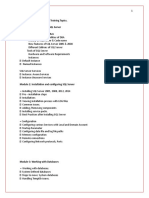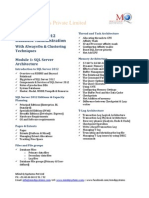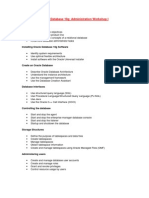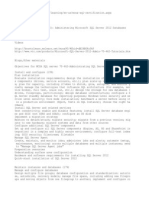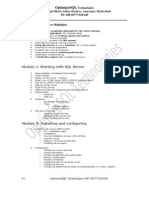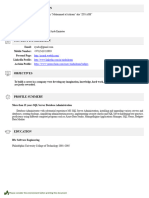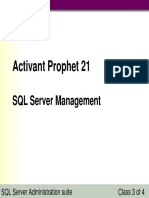0% found this document useful (0 votes)
9 views12 pagesSQL Administration Presentation
The document outlines best practices and essentials for SQL Administration, covering topics such as core responsibilities, SQL Server architecture, backup and recovery strategies, security management, performance tuning, and monitoring. It emphasizes the importance of ensuring database availability, performance, and security while utilizing various tools and utilities. Best practices include automating backups, maintaining documentation, and regularly testing restore procedures.
Uploaded by
sampathilakshmi95Copyright
© © All Rights Reserved
We take content rights seriously. If you suspect this is your content, claim it here.
Available Formats
Download as PPTX, PDF, TXT or read online on Scribd
0% found this document useful (0 votes)
9 views12 pagesSQL Administration Presentation
The document outlines best practices and essentials for SQL Administration, covering topics such as core responsibilities, SQL Server architecture, backup and recovery strategies, security management, performance tuning, and monitoring. It emphasizes the importance of ensuring database availability, performance, and security while utilizing various tools and utilities. Best practices include automating backups, maintaining documentation, and regularly testing restore procedures.
Uploaded by
sampathilakshmi95Copyright
© © All Rights Reserved
We take content rights seriously. If you suspect this is your content, claim it here.
Available Formats
Download as PPTX, PDF, TXT or read online on Scribd
/ 12














